SPAIN – The beauty of the Spanish tapas meal is that one gets a bite-size assortment of a broad array of flavours.
The same could be said of Insight Vacations’ 10-day tour of north-east Spain, which whisks one across three very different regions where the culture, cuisine and language change at every stop – from Catalan to Basque to Castilian Spanish.
From architecturally astounding Barcelona to arts capital Madrid, from sun-drenched San Sebastian by the sea to the mountainous retreats of Montserrat and Toledo, no day is quite the same.
Here are the highlights.
Art and architecture in beautiful Barcelona
“The haunting of history is ever present in Barcelona,” Carlos Ruiz Zafon once said in an interview.
The novelist, who wrote the Cemetery Of Forgotten Books quartet (2001 to 2016) about a secret labyrinthine library in Barcelona, would know.
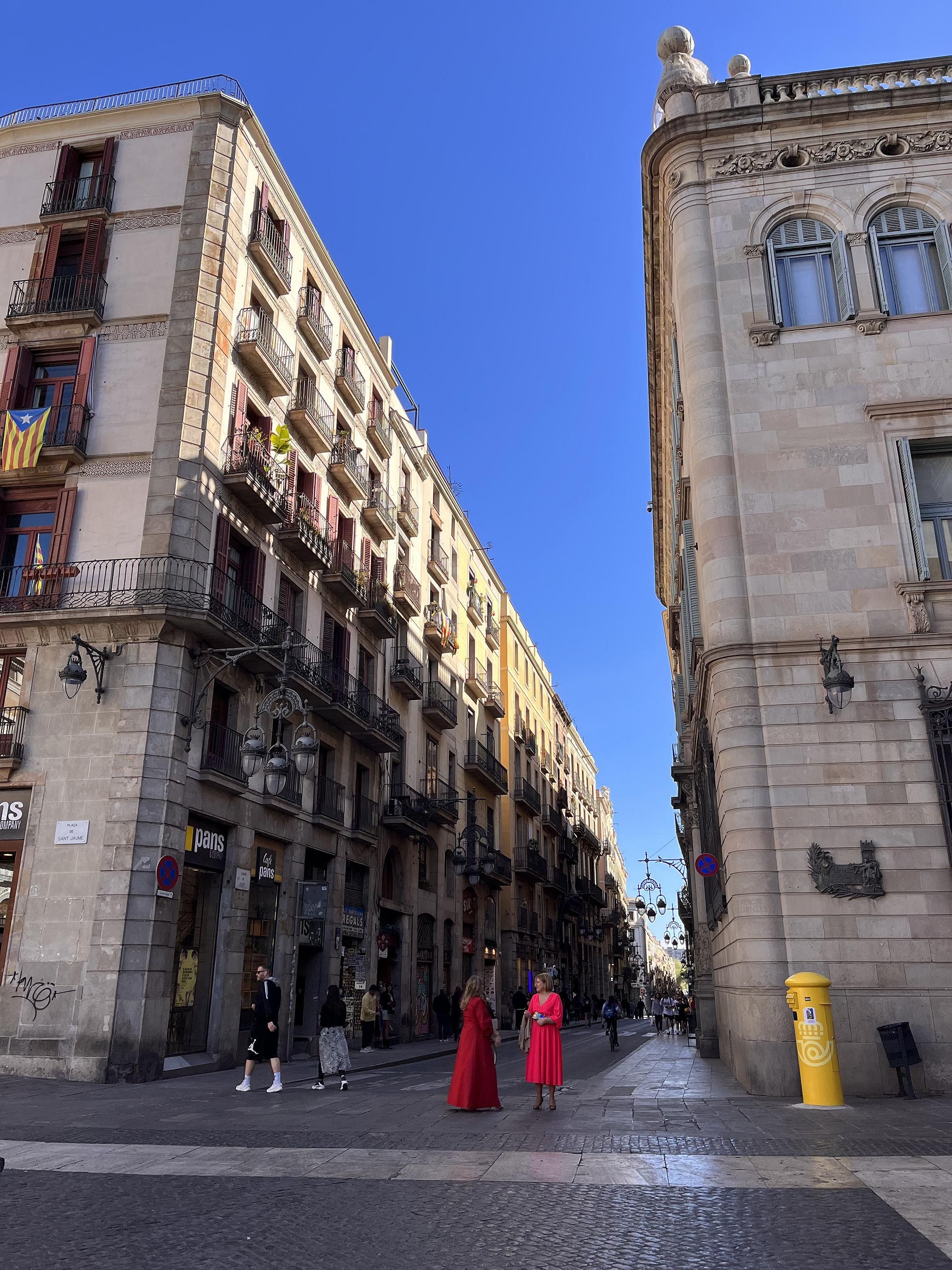
Barcelona is a supergrid city with a labyrinth lurking at its heart. Its library is in a vaulted mediaeval hall that was once a hospital. In the floor beneath a 19th-century market hall lie the ruins of streets laid to waste by war.
Catalan is the dominant language here. It was repressed during the Francoist dictatorship from 1939 to 1975. It has since been restored as an official language, and speaking it is a matter of pride for the Catalonians.
Gape at Gaudi
Barcelona is replete with stunning modernist architecture, but one architect towers over it all: Antoni Gaudi.
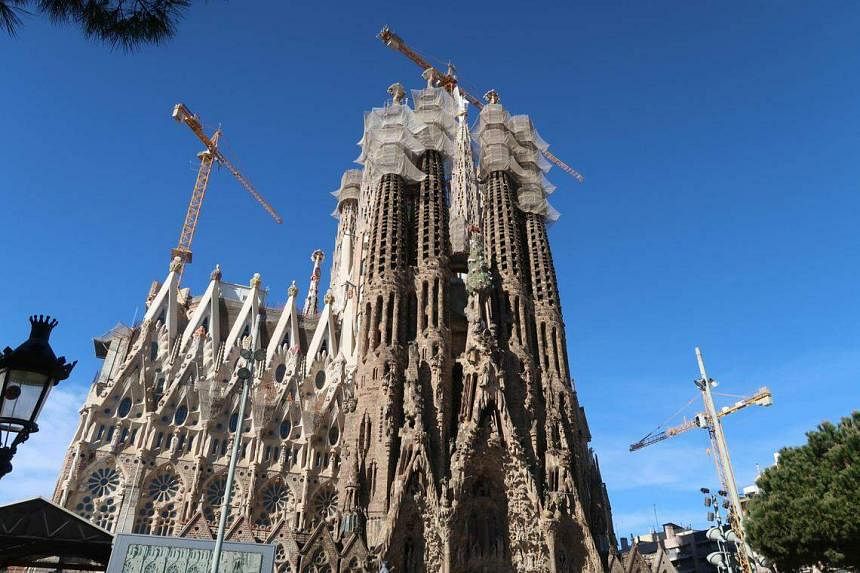
His magnum opus is the Sagrada Familia, a Catholic church that, though unfinished, is the most magnificent sight you will see on this tour. One passes from the lush, joyous profusion of the Nativity Facade depicting Christ’s birth to its obverse, the Passion Facade, a stark portrait of the Crucifixion that is all gaunt angles.
Gaudi envisioned the church’s extraordinary interior as a forest, with columns branching like trees into a dizzying hyperboloid roof.
The best time to visit is during sunrise or sunset, when light of many hues floods through the stained-glass windows and suffuses marble curves with a sublime glow.

Gaudi died in 1926 after being hit by a tram. Even before this, he was aware the Sagrada Familia could not be finished in his lifetime and left plans for its construction, though a predicted completion date of 2026 seems unlikely due to Covid-19 delays.
There are plenty of other Gaudi works to see around the city, such as Parc Guell.
This whimsical hillside garden is full of his signature curves and touches of humour, such as an undulating mosaic bench made from waste ceramic shards, or a mushroom turret studded with upside-down coffee cups.

There are also the houses he designed for wealthy patrons, such as Casa Batllo, dubbed the House of Bones for its flowing, osseous facade.
It sits on the corner of what is known as the Block of Discord, a row of houses done up in wildly clashing styles by four of Barcelona’s greatest modernist architects. If you are an architecture fan, the competition on this block is good for a giggle.
Pop into a museum
Barcelona’s museums may not have the cachet of Madrid’s, but are not without gems. The most famous is probably the Museu Picasso, which houses more than 4,000 of Pablo Picasso’s works and pays tribute to the artist’s long relationship with the city.
Atop hilly Montjuic is the Museu Nacional d’Art de Catalunya, which affords both a superb view of the city andhas a fascinating focus on the art of the 1930s Spanish Civil War. It is free after 3pm on Saturdays and every first Sunday of the month, though it is best to reserve a spot online to beat the queue.
The El Born Culture and Memory Centre features an archaeological site inside a restored iron-and-glass market hall from 1876. There, one can see the remains of streets and houses destroyed after Barcelona’s fall in 1714 during the Spanish War of Succession.
It is free to look at the ruins from above, though you will need to book a guided tour to walk among them.
Pilgrimage to Montserrat
About an hour’s drive north of Barcelona is Montserrat, a mountain range of twisting, lobed rock formations with serrated peaks that earned it the moniker of “sawtooth”.

Nestled atop its peak is Santa Maria de Montserrat, an 11th-century Benedictine monastery still active today. Many make the pilgrimage up the mountain to see the Black Madonna, a wooden statue of the Virgin Mary believed to have darkened over time.
Montserrat also has a tiny museum which, despite its size, houses masterpieces such as Caravaggio’s Saint Jerome Penitent (1605).
Fascinating flamenco
Flamenco is traditionally from southern Spain, not the north, but the Insight tour offers an optional evening at the Tablao Flamenco Cordobes, a performance hall in central Barcelona.
A dancer in a mustard-yellow mantilla and a figure-hugging floral dress sweeps about the stage, an enormous train of ruffles swishing behind her. She is engaged in a lithe call-and-response exchange with the cantaores, male singers in polka-dot scarves.
The Spanish poet Federico Garcia Lorca wrote of “duende”, a word which in Spanish means “elf” or “goblin”. A flamenco artiste can, in the heat of the performance, enter into duende, a heightened state of intense emotion that she could almost be said to be possessed by.
As I watch, entranced, the dancer begins to drum her heels faster than a construction drill as the cantaor’s voice throbs with emotion. Tears start in her eyes.
Wander in the supergrid city
Barcelona is one of the most delightful cities I have ever had the pleasure to walk in. Much of this is owed to the revolutionary supergrid plan designed by little-known Catalan engineer Ildefons Cerda in 1859.
In the early 19th century, Barcelona was suffocating from overcrowding due to the mediaeval city wall that girdled it.
After the government finally agreed to remove the wall, Cerda embarked on his plan, dubbed the Eixample (“expansion” in Catalan), which involved merging the city with nearby villages into a supergrid.
The Eixample featured wide streets, green spaces and octagonal blocks with the corners shaved off in a technique called chamfering, which increased the visibility of traffic junctions decades before the invention of the motor car.
Recent pushes to further pedestrianise the city make wandering it a lovely experience, be it the wide, leafy avenues of the Eixample or the narrow, twisting maze of the old Gothic Quarter, where tiny shops mushroom in the walls.
Tapas and cocktails
Barcelona is fantastic for foodies. Stuff yourself at no-frills tapas bar Cerveceria Catalana (Carrer de Mallorca 236) or sample Iberian ham and aubergines in honey at A Mi Manera (Carrer del Parlament 15).
If you are stumped by the queue at historic El Xampanyet near the Museu Picasso, hop a few doors down instead to Bodega La Puntual (Carrer de Montcada 22) for some fried artichokes or melt-in-your-mouth octopus.
Caffeine fiends can get their fix at Nomad Coffee (Passatge Sert 12), a tiny green shop tucked away in a leafy passage, or Cafes El Magnifico (Carrer de l’Argenteria 64), where the espresso tonic is a must-have.
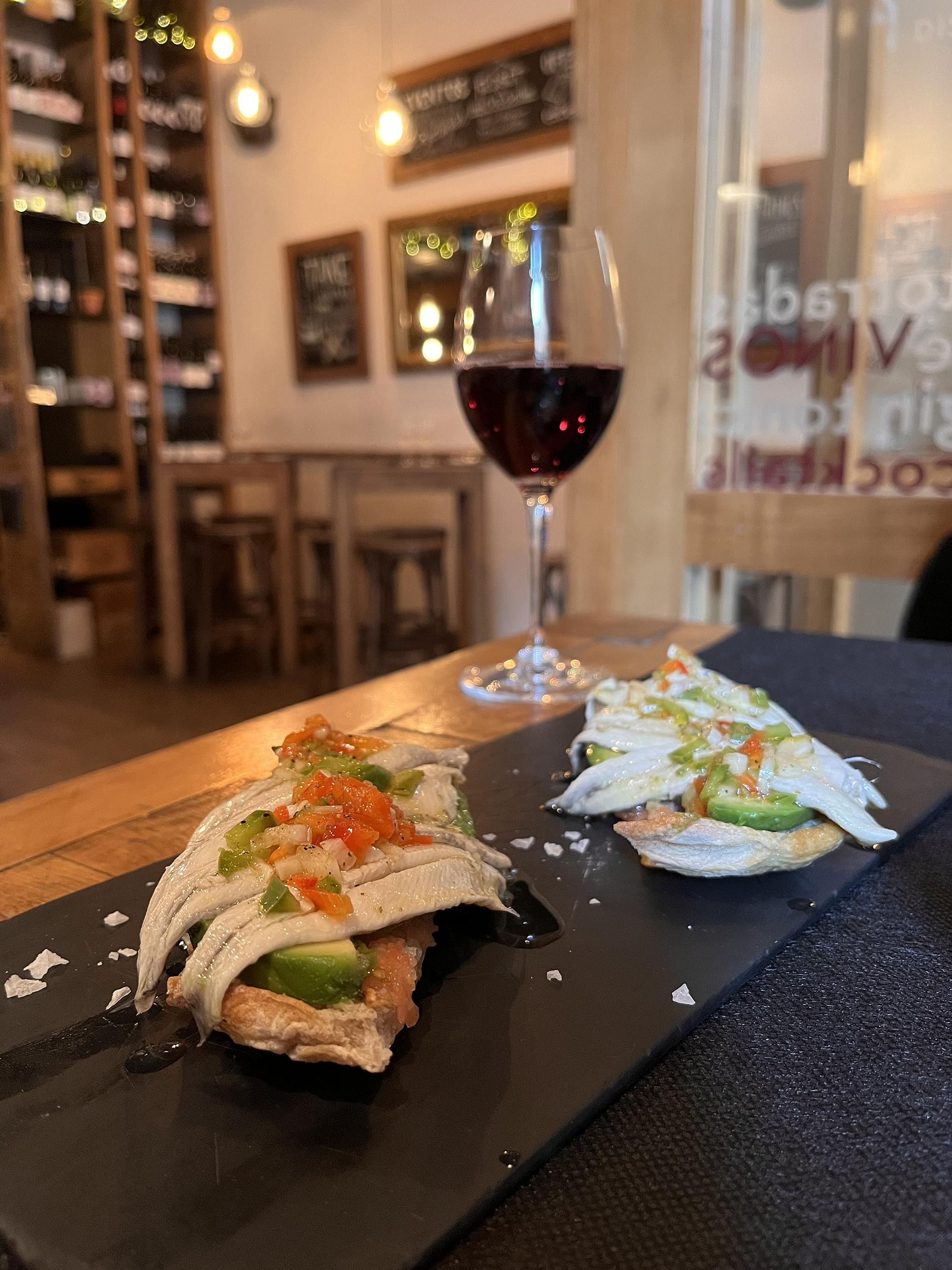
Try local wines at Eldiset (Carrer Antic de Sant Joan 3), along with torradas, or open-faced toast. The anchovies with avocados are a standout, as is the duck mousse with orange.
My favourite bar in Barcelona is Marlowe (Carrer del Rec 24), a 1940s-style cocktail bar named for the private detective in Raymond Chandler’s hard-boiled novels. Nurse a gimlet at its long, curving mahogany counter and pretend you are in a film noir.
Basque in the sun at San Sebastian
San Sebastian, seaside resort and foodie paradise, lies on the coast near the border with France. It is known as Donostia in Basque, the unique language of the Basque Country.
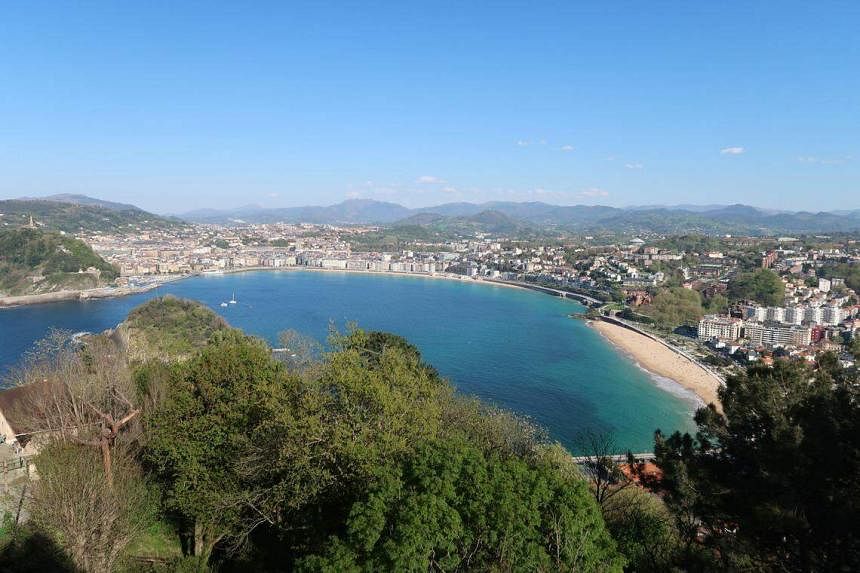
The city sits in the curve of the Bay of La Concha, so named for its seashell shape. The gleaming crescent of its beach cradles jewel-blue waters.
The best view is from Monte Igueldo, a hill topped with an old-timey funicular, roller coaster and hotel. From there, you can gaze across the bay to the Parte Vieja, the old town, where a slew of pintxo bars beckon.
Sun, sand and sea
San Sebastian gained a reputation in the 19th century as a seaside resort when Queen Isabella II made it fashionable to take the waters there.
In April, when I visit, it is still too cold for me to take a dip in the Cantabrian sea, though there are plenty of locals frolicking in the waves.
I settle instead for strolling along the seafront promenade, with its white filigreed balustrade. In the evening, the lights come on in the dusk and the tinkling of a vintage carousel outside the town hall meshes with the quiet lapping of the waves.
Pintxo crawl in the Parte Vieja
A pintxo (pronounced “pincho”) is a Basque bar snack, usually skewered with a toothpick atop a piece of bread. You can spend an evening dipping in and out of bars and scoffing a couple of pintxos at each stop.

The classic San Sebastian pintxo is a “gilda” (the “g” is silent), after Rita Hayworth’s femme fatale in the 1946 film noir of the same name, and comprises a pickled green pepper, an anchovy fillet and an olive on a cocktail stick.
For those who would rather avoid strong sour or salty flavours, there are a plethora of other pintxos on offer, from shrimp on toast to red peppers stuffed with hake.
In between bites, explore the Parte Vieja, with its narrow streets bookended by historic churches and the Plaza de la Constitucion, lined with butter-yellow windows, each bearing a number. These mark former viewing boxes from when the square was used for bullfighting.
Promenade in Pamplona
An hour and half’s drive south of San Sebastian is Pamplona, the city that American writer Ernest Hemingway made a tourist destination through novels such as The Sun Also Rises (1926).

An estimated million visitors descend upon Pamplona every year for San Fermin, a drink and danger-fuelled July fiesta capped by the Running of the Bulls, in which adrenaline junkies sprint through the old town ahead of said animals.
But Pamplona is still charming in the off-season. Get some chocolate and churros at Hemingway’s old haunt Cafe Iruna (Plaza del Castillo 44), while a busker strums a guitar in the plaza outside.
Modern art at the Bilbao Guggenheim
Also near San Sebastian is Bilbao, a once-declining industrial city that found a new lease of life when the Guggenheim Museum opened there in 1997.

From above, the museum, designed by Canadian-American architect Frank Gehry, seems to unfurl like a titanium-clad flower, though its glittering curves are reminiscent of fish scales.
An enormous bronze spider – Maman by Louise Bourgeois – squats by the riverfront, while Jeff Koons’ playful flower sculpture Puppy welcomes visitors streetside.
The Guggenheim’s collection boasts works by some of modern art’s biggest names, such as Mark Rothko, Willem de Kooning and Jean-Michel Basquiat.
Its visiting exhibitions are also a treat, from a vast Joan Miro retrospective to one of Yayoi Kusama’s Infinity Mirrored Rooms, which, having arrived early, I experience the rare joy of not having to queue for.
Cross the border into Biarritz, France
Being in the Basque Country means one can just hop across the border to France, so one morning, we grab our passports and do just that.

Biarritz is a postcard-perfect town, all sparkling sea and sand as golden as a freshly baked macaroon, upon which Belle Epoque beachfront hotels cast crisp shadows.
There are espadrilles and sunhats being hawked outside the Les Halles market. Inside, you can get white asparagus, cheese or half a dozen oysters for a few euros at the shellfish bar.
Bibliophiles should stop by the forest-green Librairie Bookstore (27 Place Georges Clemenceau), where booksellers work out of old-fashioned bureaus, one of which is suspended from the mirrored ceiling.
Michelin stars, Basque cheesecake in San Sebastian

San Sebastian is a gourmand’s dream – for such a small town, it is dense with Michelin stars, including the three-starred Akelarre (Padre Orkolaga Ibilbidea 56) and Arzak (Alcalde Jose Elosegi Hiribidea 273).
Kinder on the wallet is the popular if chaotic La Cuchara de San Telmo (Santa Korda Kalea 4), tucked away in the old quarter. It is something of an adventure to elbow your way to the bar and yell your order, but the food – succulent razor clams and flavourful orzo with mussels – is well worth it.
There is nowhere better to try Basque cheesecake than where it originated. Get a slice of gooey heaven at La Vina (31 de Agosto Kalea 3), with a glass of sherry to round off your evening.
Museums, markets and mediaeval excursions in Madrid
There is a capital time to be had in lively Madrid. Its food markets come alive after dark like dusk-blooming flowers. In front of the stately Royal Palace, the largest in Europe, flocks of teenagers film TikTok dance routines.

Going up the Gran Via in a cab, I pass a procession of inline skaters bedazzled with LED lights, whooping as they skim past in the night.
The city in April moves through what the locals call “onion days”: It is freezing when you step out at dawn and baking by midday, so you are always peeling layers off.
There is so much to Madrid, I leave thinking that I have barely peeled back the first layer of the onion.
Magnificent museums
Madrid is home to the Golden Triangle of Art, three world-class museums within walking distance of one another: the Museo del Prado, Museo Nacional Centro de Arte Reina Sofia and Museo Nacional Thyssen-Bornemisza.
The Prado alone has so many masterpieces, it would take days to get through them properly.
But make a beeline upon entry for Francisco Goya’s Black Paintings, made between 1819 and 1823 directly onto the walls of his house.
These are bleak, horrifying works, created by the ageing artist during what must have been immense mental strife. It is hard to look at the gruesome Saturn Devouring His Son – and also hard to look away.
Upstairs is Las Meninas (1656), Diego Velazquez’s game-changing portrait of the young Infanta Margaret Theresa and her entourage, as well as The Garden Of Earthly Delights (1490-1500) by Hieronymus Bosch, an utterly bonkers triptych.
This is still only a sliver of what the Prado has to offer. Photos are forbidden, so all you have is your memory.
The Reina Sofia focuses on 20th-century art and famously houses Picasso’s iconic anti-war painting Guernica (1937).
The Prado is included on Insight’s tour, but the Reina Sofia is not. Book online in advance to beat the queues, which can go round the block.
Travel back in time at Toledo
Toledo, an hour’s drive from Madrid, is one of the oldest cities in Spain, and used to be its capital until 1561.

Known as the City of the Three Cultures, it has been the home of Christian, Moorish and Jewish communities through its long history.
The highlight of a visit to this city out of the past is the 13th-century Toledo Cathedral. It houses works such as an exquisite baroque altarpiece dubbed El Transparente, which allows shafts of sunlight from a skylight to pass through and reach its tabernacle.
The sacristy features the striking paintings of the Spanish Renaissance artist El Greco, including his celebrated altarpiece The Disrobing Of Christ (1577-1579).
Segovia’s awesome aqueduct
The historic city of Segovia is best known for its first-century Roman aqueduct, which carried water from mountain springs 17km away to the city’s fountains and bathhouses.
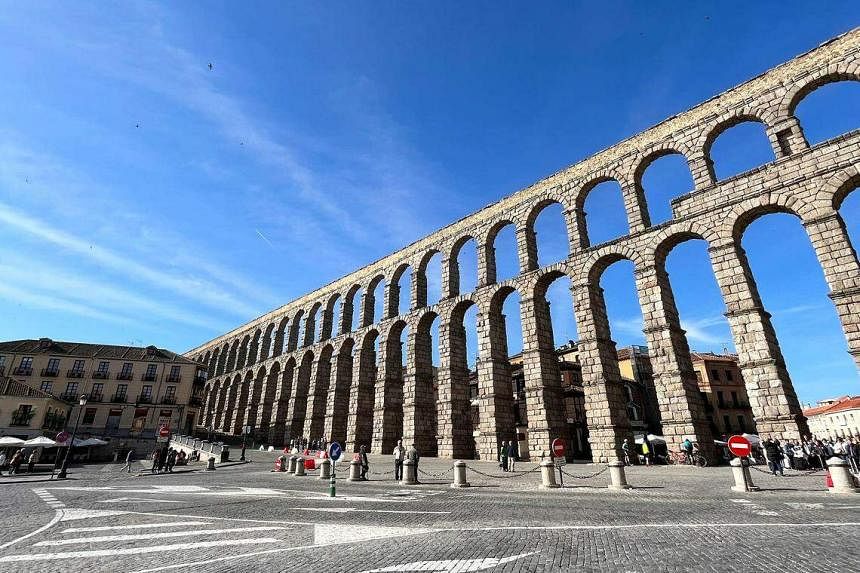
Even by today’s standards, it is an impressive feat of civil engineering. No mortar was used in its construction, meaning its arches of granite blocks have been held together purely by physics for more than 2,000 years.
Bookshop browsing
Madrid is a literary city. It was the home of Miguel de Cervantes, author of the classic Spanish novel Don Quixote de la Mancha (1605-1615). There is a huge monument to him in the Plaza de Espana, with bronze sculptures of his characters, the errant knight Don Quixote and his faithful squire Sancho Panza.
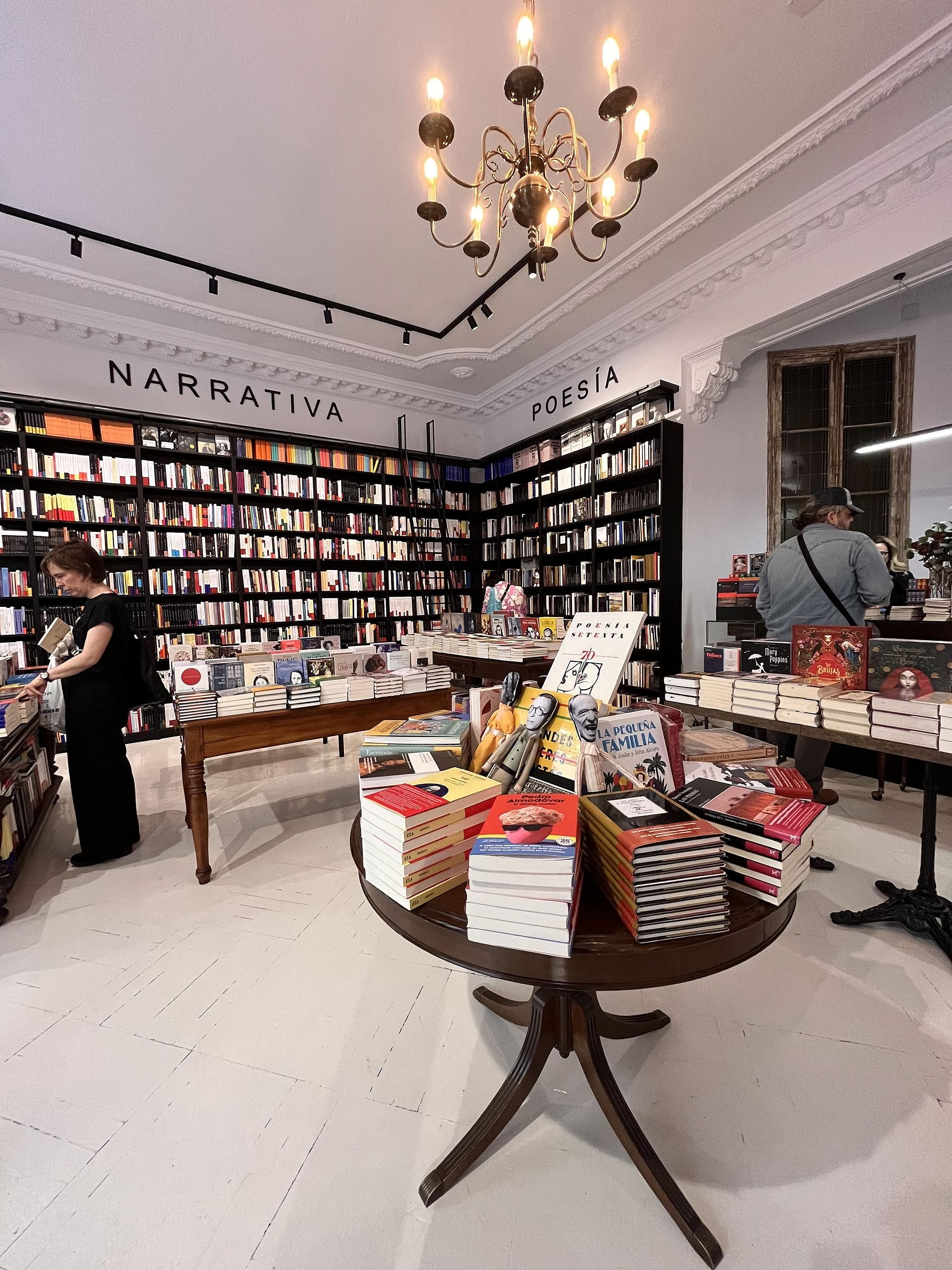
My time in Madrid coincides with Dia del Libro, or Spain’s Day of the Book, on April 23 – also the day Cervantes was buried in 1616. On this day, makeshift stalls selling books spring up along the city’s streets.
The Madrid streetside bookshop is not just a festival phenomenon. In a slender alley near a church and a chocolateria is the Libreria San Gines (Pasadizo de San Gines 2), where shelves of antique tomes and cheap paperbacks alike spill onto the street.
Round the corner is Libreria La Mistral (Travesia del Arenal 2), an elegant black-and-white bookshop with tall ladders. It is named for the Chilean poet Gabriela Mistral, the first Latin-American Nobel Laureate for Literature.
Market madness
Every Sunday from 9am to 3pm, hundreds of stalls pack the La Latina neighbourhood for the sprawling open-air flea market known as El Rastro.
The market’s name, meaning “the trail”, has a bloody history. Its main thoroughfare used to be where cattle hides were dragged from the slaughterhouse to the tanneries, leaving trails of blood.
Happily, the only ones going in for the kill these days are vintage-treasure hunters. There are all sorts of things sold at El Rastro – antique furniture, rare books, second-hand clothes, creepy old toys and more. Prepare to get lost and find things you did not even know you needed.
Flavours of Madrid
Madrid’s markets are bursting with flavour. Flit from stall to stall at Mercado de San Fernando (Calle de Embajadores, 41). Grab tasty tacos filled with braised beef, pulled pork or apple and mushroom at La Tentacion, then stop at natural wine bar Bendito Vinos y Vinilos for a tipple.
Sherry connoisseurs should head to La Venencia (Calle de Echegaray 7), which seems unchanged from when it opened in 1929.
It was a Republican haunt during the Spanish Civil War – as a journalist, Hemingway drank here to get news from the front. It has a no-photo rule, which in the past was to prevent its patrons from being incriminated by Fascist spies, and is now used to keep pesky tourist cameras at bay.

Travel tips
- The Spanish eat lunch and dinner late – after 1 and 8pm respectively – and take their siesta in the afternoons, so plan meals accordingly. Most places are closed on Sundays.
- While most places accept credit cards, keep cash on hand for smaller shops and flea markets. Coins are useful for parking ticket machines and the subway.
- Be mindful of pickpockets, especially in crowded tourist spots like the Sagrada Familia and the Royal Palace of Madrid. As one of our local guides put it: “Everything in front belongs to you, everything behind belongs to them.”
- Wear cross-body sling bags and backpacks on the front, and never leave your phone on a table or in an open pocket.
- Buy conservas. These cans of preserved seafood are great souvenirs and can also jazz up some dull rest-stop meals. Look out for chipirones en su tinta (baby squid in its own ink), berberechos (cockles) and navajas (razor clams). La Ribera (Placa Comercial 11) is a great store for conservas in Barcelona.
About the tour
Insight Vacations’ Easy Pace Spain is a 10-day guided group tour of Barcelona, San Sebastian and Madrid, with stays in four or five-star hotels (NH Collection Barcelona Constanza, Barcelo Costa Vasca and Melia Madrid Princesa).
The group travels in a tour bus with amenities such as Wi-Fi and USB charging points. They are accompanied throughout by a travel director, who will be joined by different local guides at each stop.
Some trips, such as to Pamplona, Segovia and the Prado and Guggenheim museums, are included in the tour’s base price. Other options, such as the flamenco evening and trips to Montserrat, Biarritz and Toledo, require a top-up.
Flights are not included in the price. You can fly from Changi Airport to Josep Tarradellas Barcelona-El Prat Airport to begin the tour, then depart from Madrid-Barajas Airport. The tour can arrange airport-hotel transfers at both ends.
Price: From US$2,786 (S$3,722) a person for a group size of no more than 40; from US$3,475 a person for a group size of no more than 24
Info: Go to str.sg/i33c
- Olivia Ho is a former Straits Times journalist and a PhD candidate at University College London, where she studies cities in literature. She chronicles her adventures on Instagram at @ohomatopoeia
- The writer’s trip was hosted by Insight Vacations and Spain Tourism Board.

